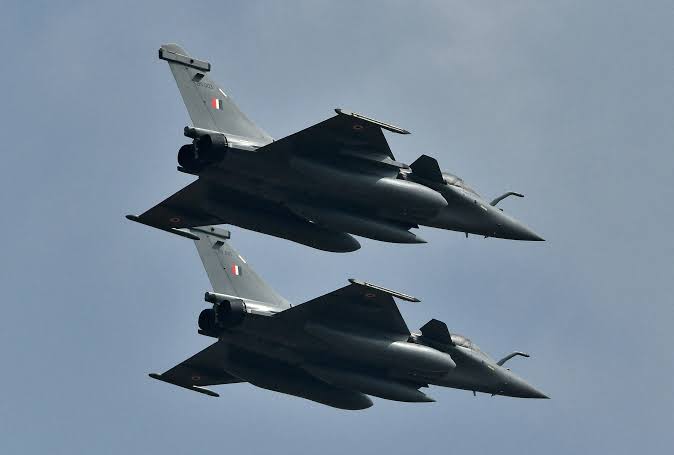India’s Reluctant Admission

India’s Deputy Chief of Army Staff, Lieutenant General Rahul R. Singh, made startling revelations at a recent defence event in New Delhi, implicitly admitting military setbacks in the four-day war with Pakistan. As if explaining the failure of the ‘Operation Sindhoor’, he presented the following five factors: One. India faced a ‘collusive threat’ from three adversaries on one front, namely, Pakistan, China, and Turkiye. Two. Pakistan was receiving real-time ‘intelligence feeds’ from China, equipping it with unprecedented visibility into Indian military moves. Three. He rued critical gaps in India’s indigenous defence systems. Four. China used Pakistan as a ‘live laboratory’ for testing its defence equipment. Five. Turkiye extended direct military support to Pakistan by providing drones and trained personnel. These explanations, based on false assertions about China and Turkiye, were a downright admission that Pakistan’s armed forces had outmanoeuvred their adversary by superior readiness, planning, and execution.
The first and the most decisive blow was given by the Pakistan Air Force (PAF) on the first day of the conflict when India ventured to violate its sovereignty. In a stunning demonstration of next-generation warfare, and demonstrating its unmatched strategic and tactical brilliance, the PAF shot down seven Indian aircraft, including four state-of-the-art Rafales. Utterly shocked and embarrassed, India has been reluctant to admit all losses of its advanced fighters. The world was awestruck by the PAF’s mastery of network-centric multi-domain operations, along with optimally utilising the sophisticated beyond visual range (BVRs) missiles, remaining confined to 300 kilometres from the border. For the next two days, the Indian Air Force (IAF) was effectively grounded.
‘Operation Sindoor’, intended to showcase New Delhi’s dominance after a dastardly attack in Pahalgam, ultimately exposed India’s critical weaknesses in defence capabilities.
The ensuing conflict shocked the world as Pakistan’s swift and robust retort checkmated Indian forces by deploying the next-generation Air Power doctrine, strategy, and tactics. After giving a bloody nose to the IAF on the first day in the ‘beyond visual range aerial battle’, the PAF extensively used precision munitions, including stand-off and smart weapons as well as drones and lethal autonomous loitering munitions, which struck high-value targets with accuracy, The stand-off weapons equipped with evasive capabilities and state-of-the-art terminal guidance ensured that critical Indian command and control centres and surface-to-air missiles, were neutralised.
General Rahul Singh has drawn all the wrong lessons from ‘Operation Sindhoor’. He failed to qualify what he imagined as a joint threat from Pakistan, China and Turkiye. Indeed, these countries are Pakistan’s brotherly strategic partners. Pakistan procures the bulk of its military equipment from China and some drones from Turkiye, just as India buys its military equipment from Russia, France, the US, and Israel. Pakistan and China have categorically denied any real-time intelligence sharing by China.
Earlier, India’s Chief of Defence Staff had said that such satellite imagery was commercially available and could have been procured from China or elsewhere. What the Indian side fails to realise is the strides Pakistan Air Force has made in mastering cyber and electronic warfare, space-based defence applications, and its robust drones and loitering munition programmes. And above all, the intense professional training of its battle-hardened forces, and their unshakable resolve to defend the motherland.
‘Operation Sindhoor’ has also exposed the pretensions of India to be the ‘net security provider in the Indo-Pacific’ or a ‘bulwark against China.’ Along with losing a war, India also lost its war of narrative and diplomacy. There were no takers of its false accusations regarding the Pahalgam tragic incident, and on that basis, launching military action against Pakistan. India failed in its malicious attempts to name Pakistan in the SCO Defence Ministers meeting, at the QUAD moot, and more recently at the BRICS summit in Rio.
India’s reluctant admission of its military setbacks in the recent conflict underscores Pakistan’s undeniable superiority in keeping up with doctrinal innovation, strategic foresight, and tactical execution. Pakistan’s military leadership believes in modernisation, innovative technologies, and indigenisation. The PAF is a prime example of this phenomenon. It has demonstrated a high level of anticipation, coordination, and precision in its multi-domain operations, which left its adversary reeling. Pakistan’s armed forces, operating as one determined unit, showcased their ability to outmanoeuvre a numerically larger foe through superior readiness, cutting-edge technologies, and unwavering resolve. Yet all conflicts serve as a sobering reminder of the catastrophic costs of war, which could plunge the region into decades of regression. Pakistan remains steadfast in its commitment to peace and win-win coexistence, preferring dialogue over confrontation. India needs to set aside its reluctance to engage with Pakistan in dialogue and diplomacy. The only way forward is a sincere and result-oriented comprehensive dialogue on all contentious issues, especially the Jammu and Kashmir dispute, on the basis of sovereign equality and mutual respect.


